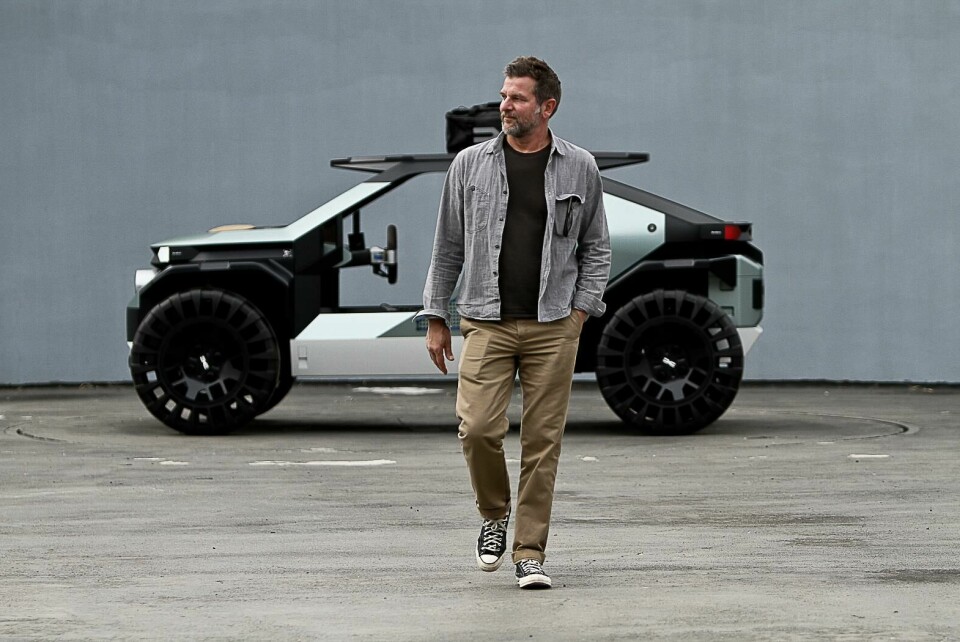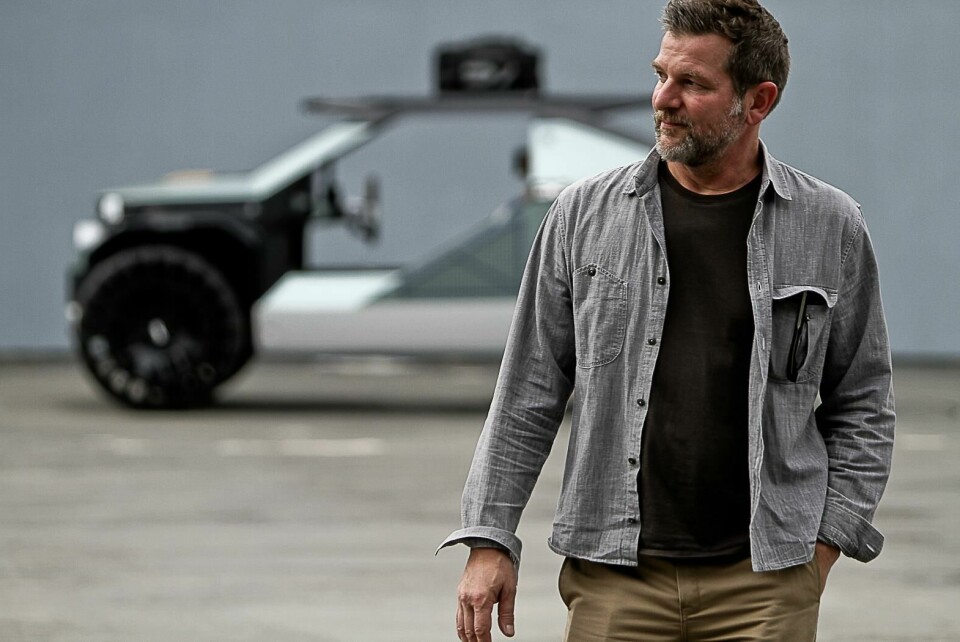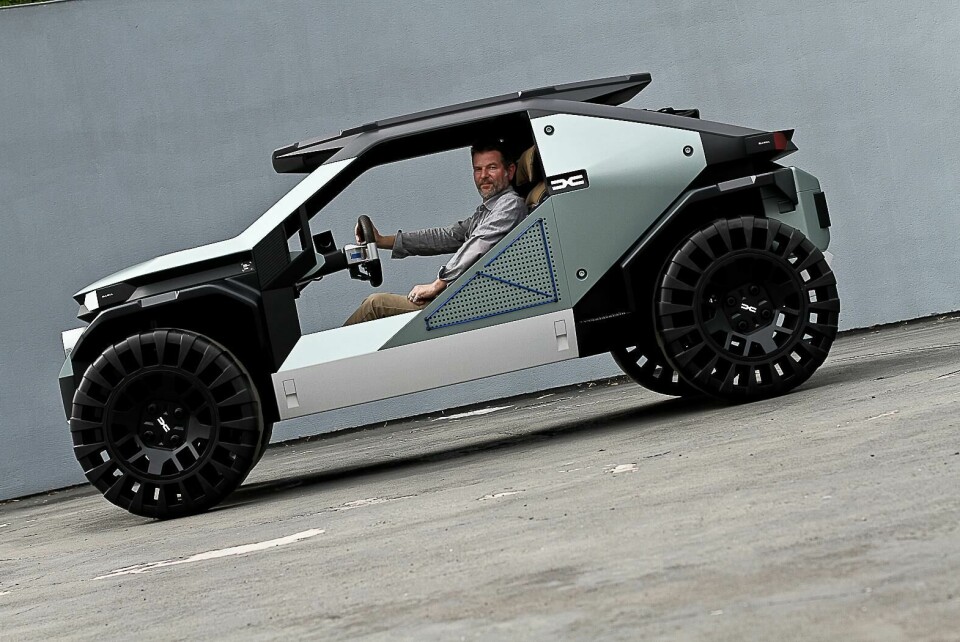
Car Design Review X: David Durand, Dacia
Dacia design boss David Durand shares his personal approach to design in this exclusive Car Design Review X interview
When we started the Manifesto concept it was not at all about a Dakar race vehicle, the goal was to speak about our new brand values – ‘robust outdoor’, ‘eco smart’ – it was a really free exercise. We opened the project up to all of our Dacia designers as a way to motivate the team and let them express what they had in mind. We were surprised by the response and happy to see the first drawings, some with no windscreen or doors, interesting ideas.
When Group CEO Luca de Meo arrived in 2020 he wanted designers grouped by brand and it does help to create a little family. It was an interesting exercise before to design an Alpine and then a Renault and a Dacia, but I think if we really want to have stronger brands, having a team which is dedicated to one brand and thinking within that atmosphere, creates results that are even more convincing.

We have almost 80 people in the Dacia team, 35 in Romania and the rest in France. COVID accelerated those teams being able to work together remotely. Today there’s no difference between working in Romania, France or from home. Each designer joins the meeting and in this way we are closer than before.
We use new software tools like 3D Google, so we can make presentations and be connected in the same virtual room around a 3D mock-up as avatars, sharing viewing angles and more. We still have some physical mock-ups though. Even if we are working a bit less by hand, we are milling a lot. It’s still very efficient to build a volume and complex shapes like this and see them in real life, for scale and the reflections. The Romanian studio is fully-equipped to mill clay mock-ups too and sometimes at the end of the process we can mill the same car in Romania and France, so we can have the same feeling and compare them together, instead of sending mock-ups from one studio to another by road trailer.
I often refer to Dieter Rams… This way of thinking works well for Dacia when looking for ‘the essential’
The French Dacia studio is still in the Renault Technocentre and although we have dedicated areas for each of the Group’s brands, we don’t have any doors between us. We share the same workshop and have some common presentations. Everything is quite open. For me, it’s important to keep a good relationship between the Group’s brands as it creates good feedback, rather than hiding ourselves away. I feel stronger by sharing our way of doing and having good examples next to us.
I often refer to Dieter Rams, the 20th Century German designer, famous for the very pure products he designed for Braun and also for his design philosophy including “less is more” or “good design is as little design as possible”. This way of thinking works well for Dacia when looking for ‘the essential’, and is a source of inspiration for our team. But making things simple is quite complex. We are always asking ourselves if we really need this part, line, intersection and so on. Designing value-for-money cars means working to a lot of constraints on cost, technical solutions or reduced complexity. We carry over some parts, but that stimulates our designers’ creativity more than having a blank page and an open budget.

Another important aspect is proportions. I used to say that proportions are 60% of the final visual impact of an exterior design, with 40% styling. In the case of Dacia, I think it’s even more important: good proportions are mandatory to express robustness and protection, which is a strong marker of our cars. Good proportions allow us to use less ‘make up’, meaning fewer lines or complex styling effects, deco parts and add-ons. In this way we are contributing to our ‘design-to-cost’ approach.
Dacia’s story is still developing. In the early years, it was important to install trust with simple and robust Germanic design. Today, we show the evolution of the brand with a new identity and design language showing the confidence and unique position in the market, avoiding mainstream trends. We are not obliged to have electrical seat adjustment in a Dacia. We can drop some gadgets that our customers don’t really need and focus on reliability and robustness. For instance, we decided to suppress chrome on our new brand logo in five minutes. Chrome made sense on a steel part when that protected it from rust, but today if we put chrome on a plastic part it’s not really clean to produce and doesn’t make sense.
We often go out and experiment, camping or cross-country mountain-biking. If you do what your customers do, it influences you immediately
We have historical customers of Dacia that remain, but also newcomers from higher-range cars, so we have to respond. They can afford more expensive cars but are considering us as they’re not sure if it makes sense to put so much money into buying a car which could just get stuck in traffic. Even if they are ready to be more ‘essential’, there are some things they really want. So we have to consider that in comfort, details, textiles and finishes. It’s kind of new for us.
It’s true, it was a bit of a changing period in our team a few years ago, with two different design directors joining and leaving in quick succession, but both of them brought something fresh to the Group. Now it’s more calm, but the role of Dacia was always clear. It’s not like the brand has to be reconstructed. There was an evolution, but the pillars of the brand are strong and well understood in the company, and also by our customers. The thing we are all trying to do is make the brand even more attractive.
In terms of new designers joining the team, sketching ability is important but so is understanding the brand, a good personality and teamwork. We often go out and experiment, camping or cross-country mountain-biking. We try to share experiences – not so much talking about work – but if you do what your customers do, it influences you immediately. If you come back from a bike ride covered in mud and have to change in your open boot before you jump into your car, you can see that it could be useful to have a bag in there, and perhaps a handle. I don’t have a perfect profile in mind, it could be anybody.



